Rhododendron: what is it, the rules of planting and care
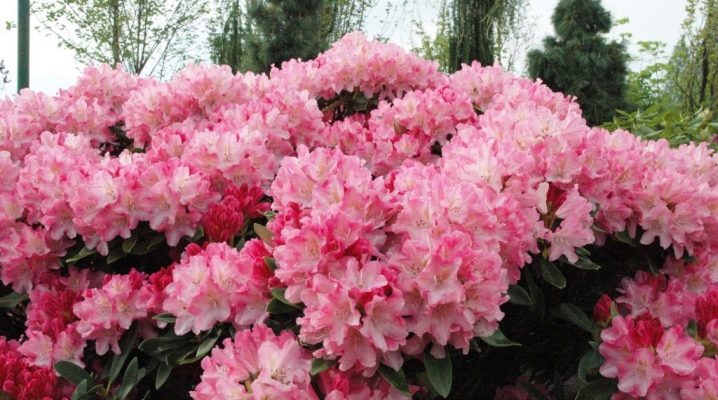
The plant with the unusual name "rhododendron" is almost the second most popular flower after roses. Most often it can be seen on the magnificent landscapes of the Caucasus, but only with the onset of the beginning of the 19th century, the rhododendron was taken out of its borders and began to be used as a living fence. The flowers of the plant can have hundreds of different shades depending on the variety and are able to unimaginably decorate any place of their growth. This article will tell you how to grow a rhododendron on your own, transplant it, seasonal care, its many varieties and other nuances.
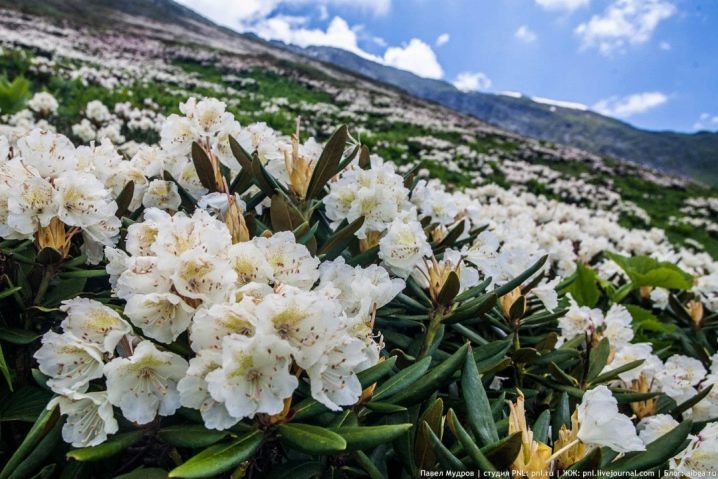
What it is?
Rhododendron is a plant belonging to the Heather family. It is a shrub form culture. The average height of the shrubs is 0.3 meters. Rhododendron trees can be of several varieties.
- Evergreen... Typically tall shrubs fall into this category. They do not fall off in winter. They grow only in soil with a high peat content. The flowers are usually large, of various bright colors. Require areas with diffused shadow.
- Deciduous... Best of all, they tolerate domestic winters. They have a relatively low level of care requirements. Bloom vigorously, twice a year - in spring and autumn.
- Semi-leafy, or semi-evergreen. Usually represented by low trees or shrubs, they do not grow much and have a compact shape. These are frost-resistant species - they perfectly tolerate wintering and cold. Leaves fall off before winter, with the exception of a few leaves at the end of the branches. Later, they give rise to new leaves in the spring.
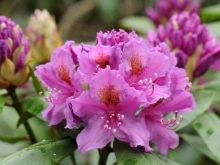
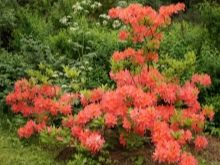
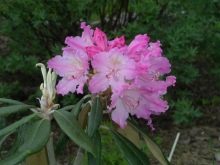
Now from 800 to 1300 species and almost 3000 varieties of this plant are known. Among the most famous is the Azalea flower, the alternative name of which is indoor rhododendron.
The name of the plant gives a description of its appearance - the first part (Rhodon) means “rose”, and the second (Dendron) means “tree”, which, when combined, form the translation “rose tree”. It is worth noting the pronounced similarity of the aforementioned azaleas with roses.
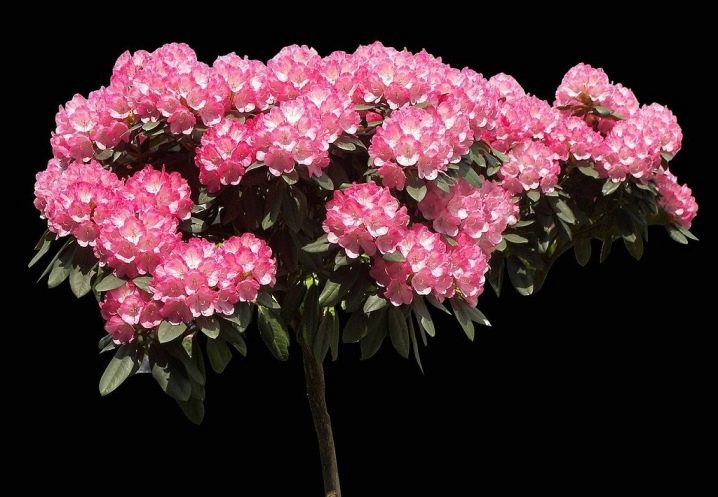
Flowers of different varieties and types of rhododendron differ from each other in color and size. The largest fixed flowers of this plant can reach 30 cm in diameter, and the smallest - 1 mm and resemble beads. They have a wide range of colors and shades - from purple and red to pink and white. Not all flowers have a smell - it depends on the type of plant. They are collected in brushes, less often in shields. Flowers can be round, funnel-shaped, tubular, or bell-shaped. The leaves are distinguished by a rigid structure, they are arranged alternately. The fruit of the rhododendron is a polyspermous capsule. The size of the seeds is 2 mm.
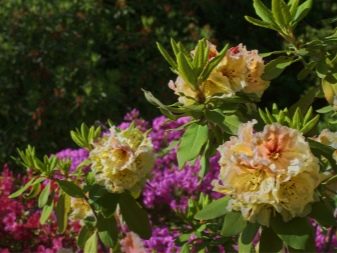
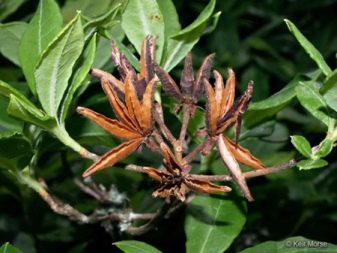
Like most trees and shrubs, the rhododendron cannot bloom profusely every year. Typically, a vigorous bloom alternates with a modest bloom each year. But if you want to get a lush flowering of rhododendron bushes annually, then for this you need to get rid of wilted inflorescences by pruning immediately after they bloom.
This will help the plant redistribute its energy to the formation of new flowers next year.
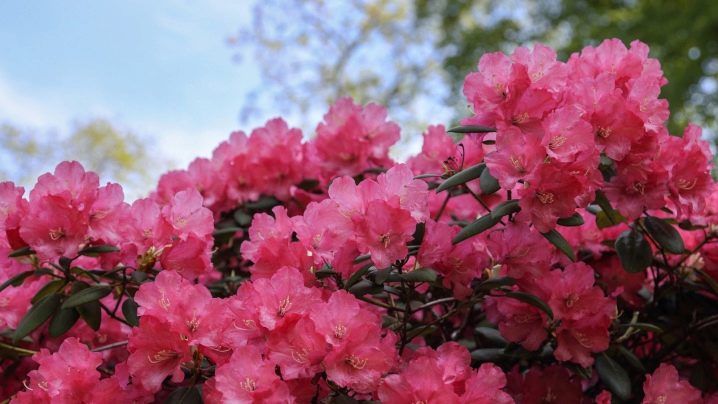
The root system is distinguished by a large number of fibrous roots and is located close to the surface. In general, it tolerates planting well and quickly adapts to a new place.
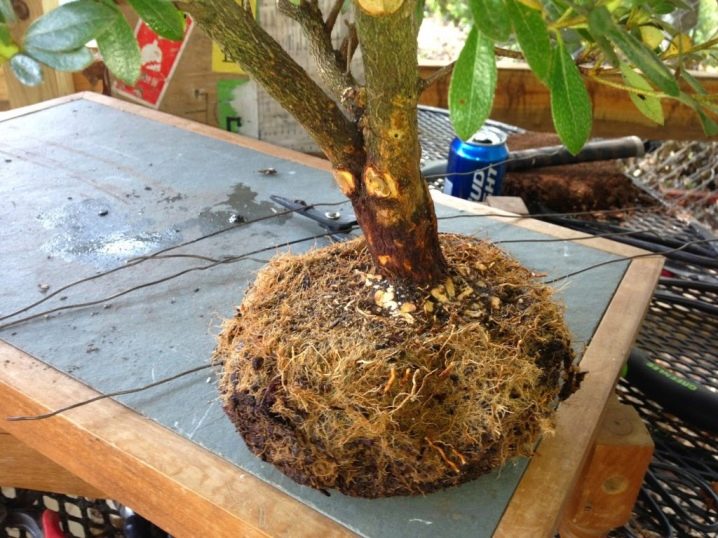
The plant prefers a cool climate and grows mainly in the northern hemisphere in regions such as Southeast Asia, southern China, the Himalayas, as well as the Japanese islands and parts of North America. One of the differences between this plant and roses is that it prefers to grow in partial shade, on the northern side of the slopes, in the mountains and near bodies of water (seas, rivers and even oceans).
Rhododendron is a perennial plant. The average lifespan of most types of shrubs is 30 years, but, in some cases, with good care and peculiarities of the variety, this period can reach up to several hundred years.
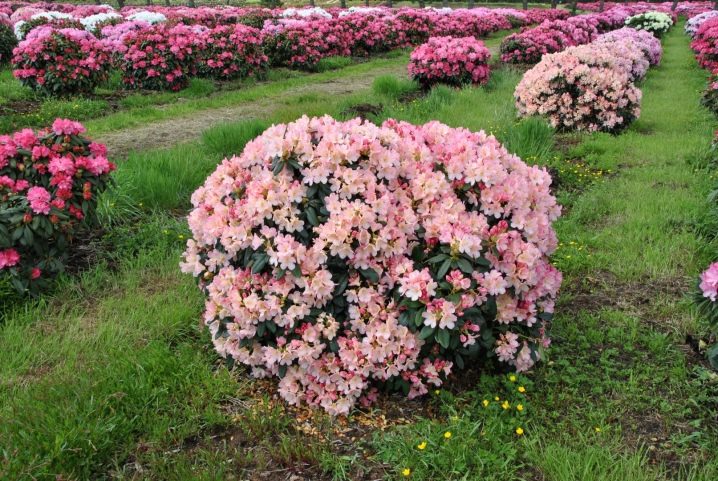
On the domestic territory, only about 20 species are capable of growing, almost all of them are frost-resistant.
Types and varieties
The differences between plant species from each other are mostly in the leaves. They can be petiolate, sessile, whole-edged, perennial, annual, serrate, ovate, pointed. It is the unusual and spectacular shape of the leaves, and not just flowers, that is often the reason for the popularity of rhododendron among gardeners and florists.
The most common type of this plant is garden. For growing plants in cold climates, it is best to choose Kamchatka or Canadian rhododendron. These species are deciduous and hardy. For warmer climates, species such as the golden rhododendron and the ketevba with its various hybrids are suitable.
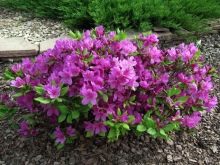


The most popular are hybrid varieties of this shrub.
Among these varieties, it is worth noting "Cunninghams White". It can grow up to 0.2 meters in height and occupy an area of about 0.15 meters wide. Flowers, as it becomes clear from the name of the variety, are painted white and collected in inflorescences of 10 pieces. Have light yellow specks.

Another representative of this category is Nova Zembla. This plant has an attractive appearance mainly due to its upright stems. The plant can grow to about 0.3 meters in height and grow 0.25 meters wide. Distinctive features - glossy leaves and red, with a black core, small flowers. To the hybrid types can be attributed and "Roseum Elegance", similar to "Nova Zembla".
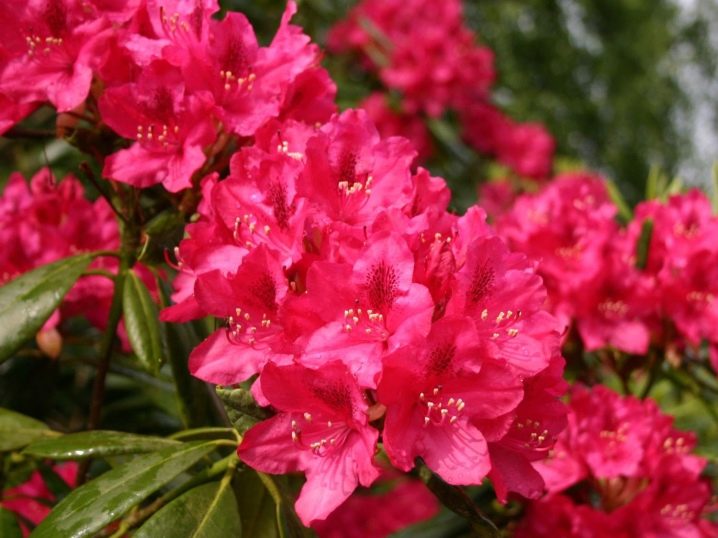
Another unusual representative of this plant is the Pontic rhododendron. It is an evergreen bush with pink-purple bell-shaped flowers. It blooms magnificently only once a year. Flowering lasts about 4 weeks. It grows mainly only on the Black Sea coast or in the Caucasian lands.

Separately, I would like to talk about the Golden Lights azalea. This shrub can grow up to almost 2 meters in height. It blooms luxuriantly and brightly with large bright yellow, sometimes green flowers. Despite the fact that it does not tolerate the abundance of sunlight and the generally hot climate, it is a thermophilic variety of rhododendron.
Poorly adapted to severe frosts.
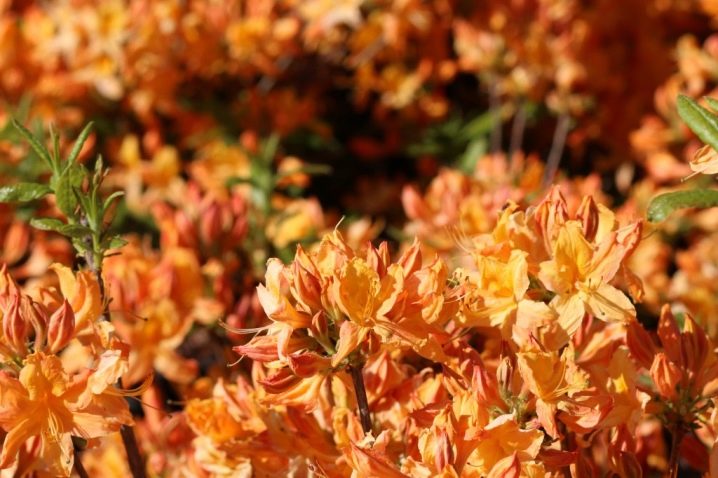
The Fantastica rhododendron is distinguished by a bright "passionate" red-pink color. This variety was bred in 1968 in Germany. It is an evergreen shrub and can grow up to 200 years old. It grows on average to a maximum of 1.5 meters in height. The flowers practically do not smell, but they are rather large - they reach almost 7 centimeters in diameter. Requires high acid soil where pH should be between 5 and 7.
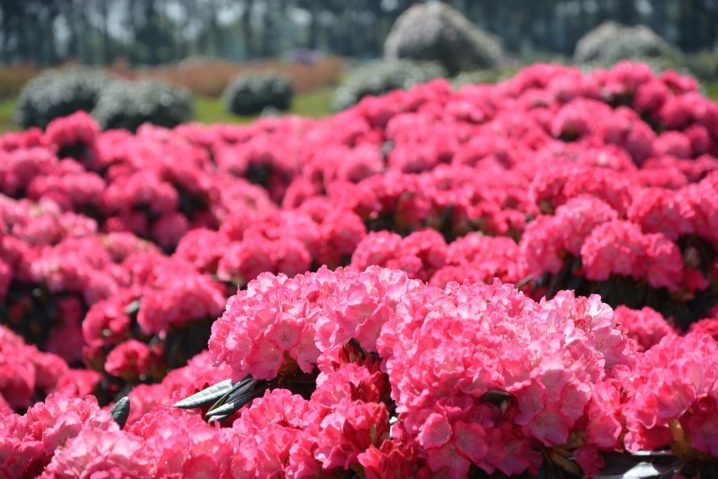
In many ways, the Helikiki variety is similar to Fantastic. It also blooms vigorously with pink-red lush flowers. The flowering period is mid-June. This variety of rhododendron does not tolerate the influence of direct sunlight - the flowers can "burn out". Requires annual pruning of buds and careful maintenance throughout the year.
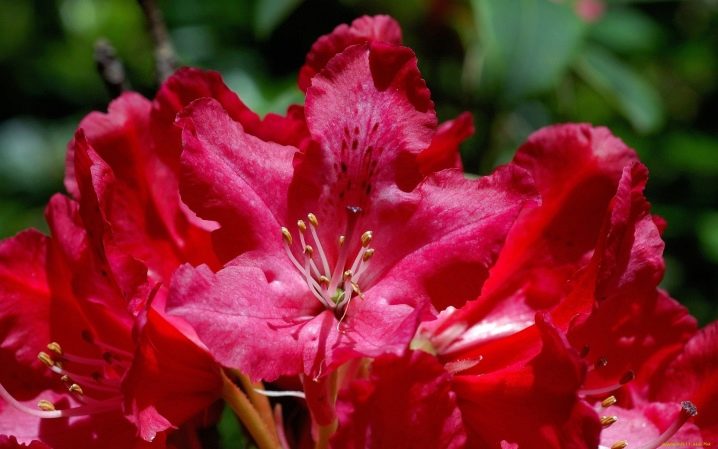
In conclusion, it should be said about the rhododendron fori. The flowers of this shrub are pale pink, turning into white. Its peculiarity is frost resistance, the shrub can withstand frosts down to -30 degrees. The main area of its growth is the Far East and the Kuril Islands. Perfectly adapted to the domestic climate.
Most often it can be found in mixed forests.
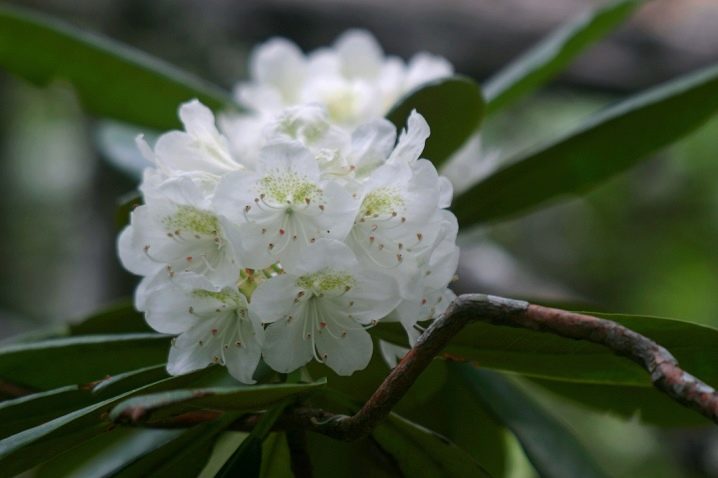
Landing
Rhododendron is a rare plant that can be planted all year round. The flowering time and half a month after it are considered a special period, therefore, the plant cannot be transplanted at this time. However, most rhododendron varieties are planted in the second half of spring. Sometimes autumn planting is allowed - from early September until November.
As mentioned above, this plant loves coolness, so you need to choose shaded places for planting, best on the north side. Therefore, quite often rhododendron bushes are planted in a row along the stone walls from the north. Evergreen species especially need “shelter”. The hot summer sun can be detrimental to them. The soil at the planting site should be acidic, well-drained, a high content of humus is welcomed.
The recommended soil pH level in which rhododendron should grow is 4.5 - 5.5 units.

An interesting fact: it is not necessary to measure the acidity of the earth using various instruments or to invite specialists for this. There are a number of plants that indicate that the soil in the area is acidic. These are field mint, buttercup, sorrel and a number of other crops. Nettle, which is widespread in many areas, suggests that the soil is most likely neutral or slightly acidic. It is impossible to plant a rhododendron in such soil.
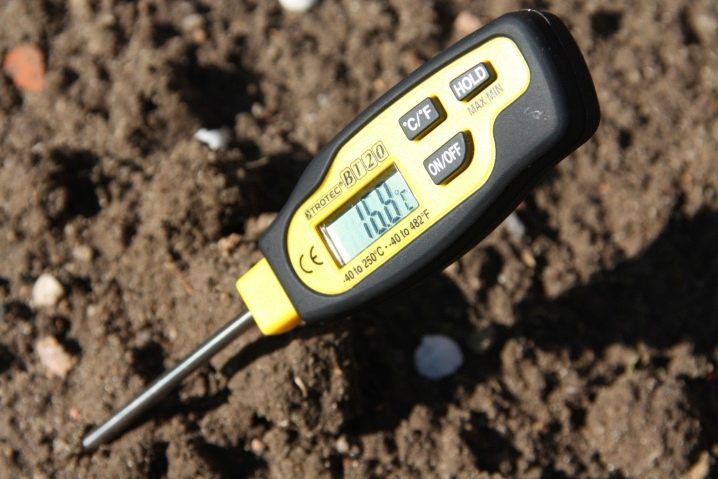
You need to know that you cannot plant rhododendron in soil located less than one meter from groundwater.
If, nevertheless, it became necessary to plant a plant next to a reservoir, then before planting it is necessary to make a raised bed. The plant grows well in the shade of massive trees with a strong and deep root system. Bright representatives of such trees are oak and conifers. It perfectly tolerates the neighborhood with an apple tree and a pear tree. Grows well next to ferns. But there is also a "bad neighborhood" for rhododendron - these are trees whose roots can be at the same depth as the roots of this plant... For example, these are willow, maple, birch or poplar and a number of other trees. "Bad neighborhood" in this case is a difficult, but still possible coexistence. Therefore, it is possible to plant such plants with rhododendron, but the place for planting between the two plants will need to be divided by a piece of slate or a dense bag.
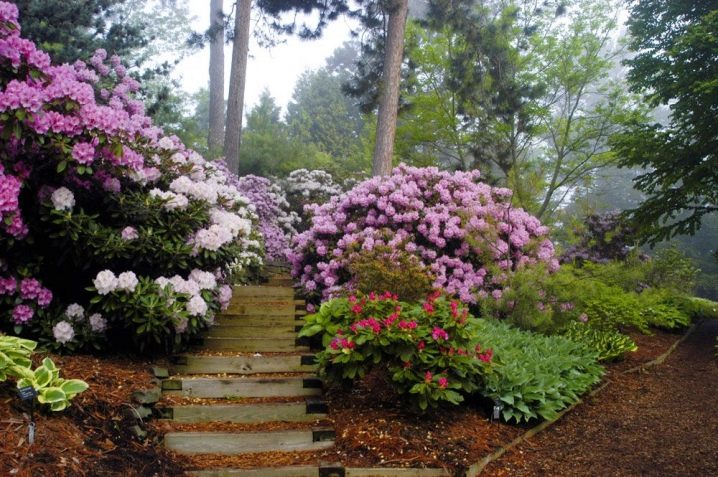
Before transplanting this shrub, you must leave the root ball in a container of water. When the lump is immersed in the container, bubbles will be released from it. Leave the root ball in the water until they no longer stand out.
The step-by-step transplant instructions include several steps.
- After you have chosen a suitable place, you need to start digging a hole. It should have a shallow depth (about 40 cm) and about the same width (up to 60 cm).
- Now you need to "knead" the soil mixture. To do this, you need to mix clay (3-3.5 buckets) and peat (8 buckets).
- Pour the mixture into the hole and compact the soil mixture layer.
- After that, you need to roughly measure the root ball and make the same hole in the hole.
- It is necessary to place an earthen lump of a plant soaked in water in a hole, namely, in a hole. Seal carefully.
- If necessary, fill the voids in the pit with soil mixture. It must be remembered that the level of the root collar is the level of the soil surface in which you planted it. At this point, the transplant process can be considered complete.

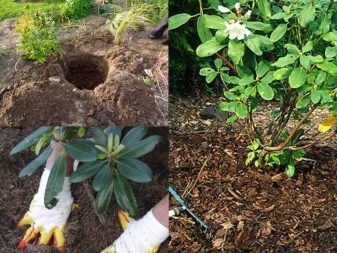
Immediately after transplanting, the "rosewood" needs good watering. If you do not quite understand how long you need to water the plant, then take the following as a guide - the level of the wet earth should "go" 20 cm deep. It will also be necessary to cover the area around the trunk with a mixture.
This mixture can be peat, moss or oak leaves. The layer of the mixture should be about 60 mm thick, but no more.
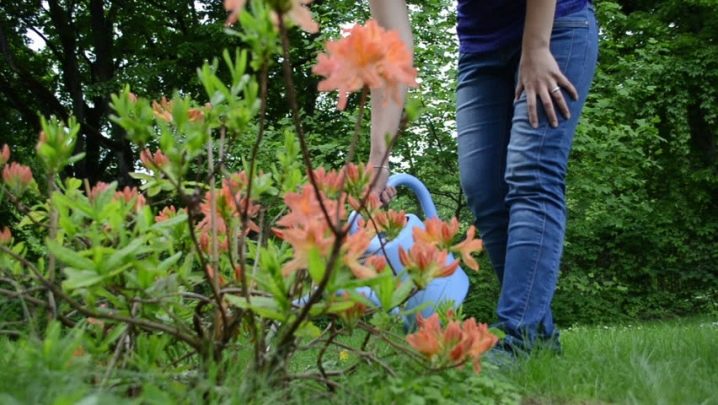
It should be borne in mind that young rhododendrons tolerate the lack of neighborhood rather negatively. This is due to the fact that any wind, even if a little tangible, can shatter the plant. A support in the form of a wall, lattice, or a homemade prop will correct the situation. The self-made support should be installed in such a way that it protects from the wind. After the plant is "fixed" in a new area, you can immediately remove the support (only if it is artificial).
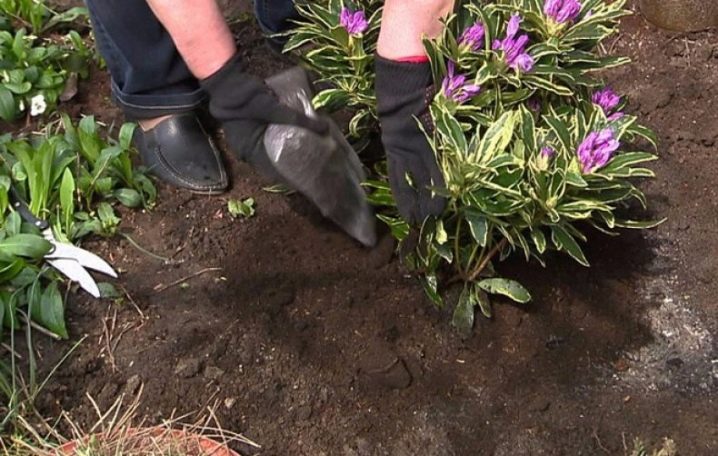
It is recommended to cut off all the buds before transplanting. They can prevent the rhododendron from settling in a new place faster.
Care
Growing this shrub outdoors requires careful and regular maintenance. One of the main recommendations sounds like this: in no case should you weed or dig up the ground near the roots of the plant. This is due to the fact that the roots, as already mentioned, are located quite close to the surface. Thus, there is an increased risk of damage. Unfortunately, this does not eliminate the need to do weeding after all. It is best to do this by hand, and, of course, with gloves. It is prohibited to use iron tools, even small ones. You also need to get rid of weeds only by hand. An important role is played by the very structure of the roots of rhododendron. They are quite thin - sometimes they may not be thicker than hairs, and are highly susceptible to injury.
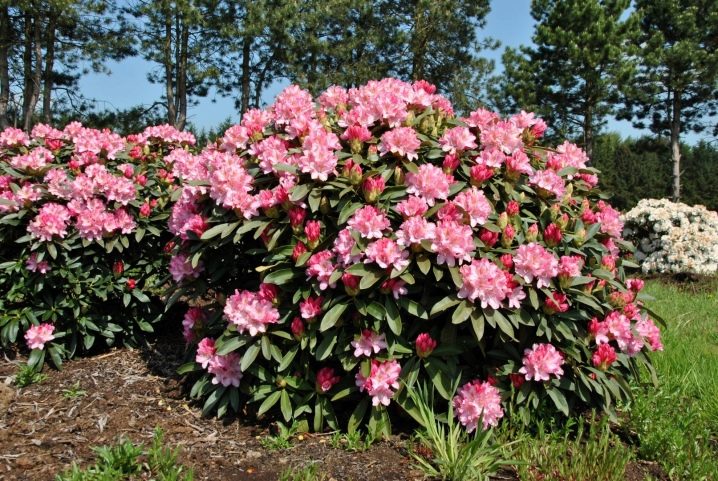
The plant needs regular watering, especially during the period of bud formation and flowering itself. Watering the plant is carried out only with settled water. A rain one is best, but you can use another. The main thing is that it is soft. Getting this kind of water is not a big problem. To do this, add a little peat to a container with water a day before watering. You don't need to take a lot of it, just a couple of handfuls is enough. By the way, he himself will tell how often rhododendron actually needs watering. In a shrub suffering from a lack of water, the leaves become dull. However, you cannot water the plant abundantly. In this case, the leaves of the plant also instantly react negatively - they begin to curl. Therefore, it is highly discouraged to do watering in the summer more often than in other seasons. During hot days, it is recommended to spray the crown of the plant with water from a spray bottle. In the conditions of the domestic climate, droughts are often observed in autumn. Therefore, the plant may need watering in the fall as often as it does in the summer.
The recommended amount of water required for one plant is about 10 liters. On rainy days, regular watering should be abandoned.
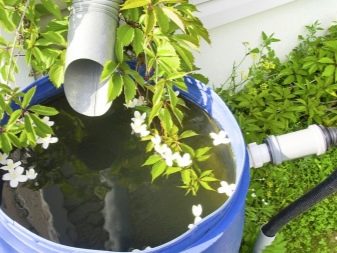
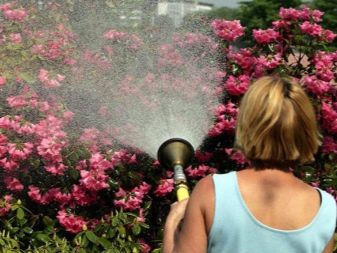
Separately, it is worth talking about plant wintering and preparation for it. First of all, it is necessary towards the end of autumn (in November) to "warm" the roots of the plant with a layer of peat. If winter comes early in the cultivated area, then it is necessary to “warm” it after the first frost. Another method of "warming" is carried out with the help of branches of coniferous trees. Spruce branches are placed between the branches of the rhododendron, and then they are all covered with a dense rope and covered with burlap. Sometimes a metal frame is used as a support for the fabric during the wintering period. It will be possible to "open" the plant in early spring. It is necessary to do this on a cloudy day so as not to injure the plant with an abundance of sunlight. The process should take place gradually and take several days. Of course, if winters are snowless in the area where the rhododendron grows, then the need for winter shelter automatically disappears.
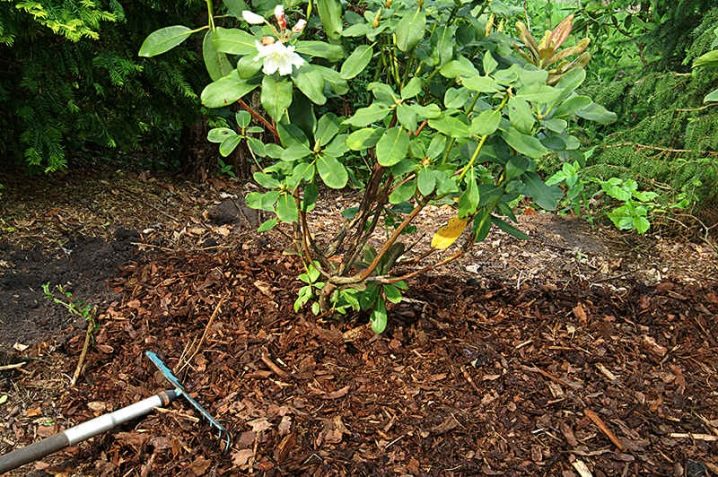
In the spring, the rhododendron can be damaged by exposure to sunlight. Therefore, in some regions, the plant is protected with ordinary gauze folded in several layers, or with a light cloth.
The recommended frequency of watering the plant in summer is a couple of times a week.
Rhododendron is a rare type of shrub that requires little or no regular pruning. Pruning is recommended only when it is necessary to shorten the plant or get rid of dead branches. It is only necessary to shorten the rhododendron if the plant has become old or suffers a disease. Pruning of the plant is carried out during the cold season and the best time for this is early spring. After pruning, it is necessary to process the cuts with garden varnish. It is imperative to carry it out before the plant "wakes up" after winter. It is worth noting that a month after pruning, new buds are formed on the trimmed shoots.
If the bush has been badly damaged by disease or frost, then only half of the dead branches can be cut off, and the rest must be disposed of next year.
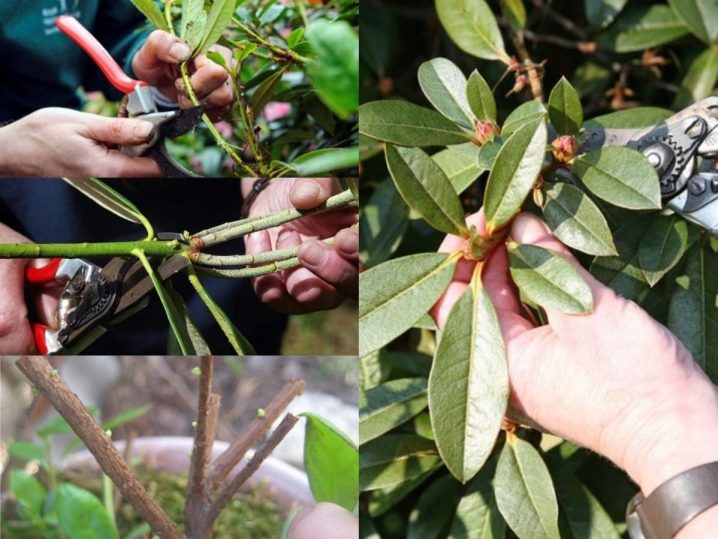
This crop also needs feeding like others. The fertilization period begins in early spring and ends in the second half of summer, after the rhododendron has finished flowering. Since rhododendron grows only on acidic soil, then the fertilizers applied must have a composition that does not violate such an environment. The mixture may contain any "acidic" components, such as potassium sulfate, magnesium sulfate or ammonium, but in a fairly low concentration. It is recommended to use only liquid mixtures, which include half-rotted manure and horny flour. If you do feeding yourself, then you must definitely take into account that the mixture must be allowed to stand for several days before use. The ratio of manure to water should be 1: 15. Water the plant abundantly before each feeding.
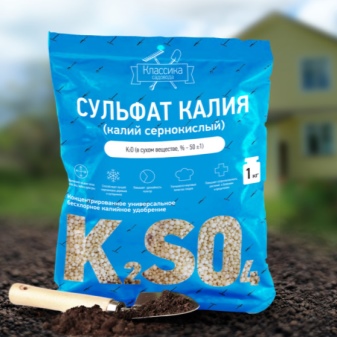
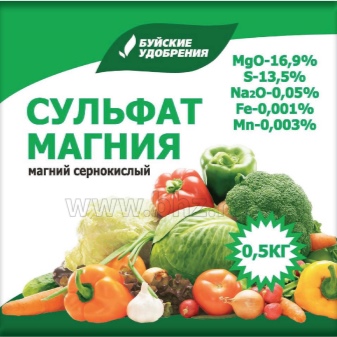
Professionals recommend the following feeding frequency, targeting a full year.
- The first time feeding is done at the beginning of spring, as mentioned above. During this period, it is recommended to use mineral or nitrogen fertilizers. The recommended composition includes 50 grams of magnesium sulfate and ammonium sulfate per square meter of soil. Although, of course, you can use a composition of other components. The main thing is that they do not disturb the soil environment.
- The next time the mixture is applied at the beginning of summer, during the period when the plant will complete its flowering. This time, the recommended composition consists of potassium sulfate (20 grams), superphosphate (20 grams), ammonium sulfate (40 grams). The volume is provided based on 1 square meter of soil.
- The third and last feeding is done in the middle of summer and then only potassium sulfate (20 grams) and superphosphate (20 grams) are used.
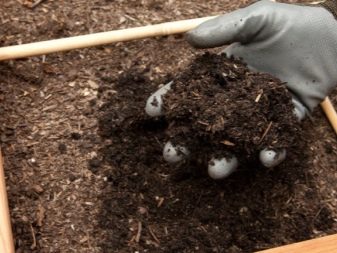
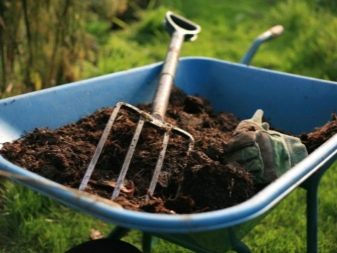
It is worth noting that rhododendron is an unusual and somewhat controversial plant - it loves the abundance of the sun, but reacts poorly to too many direct rays.
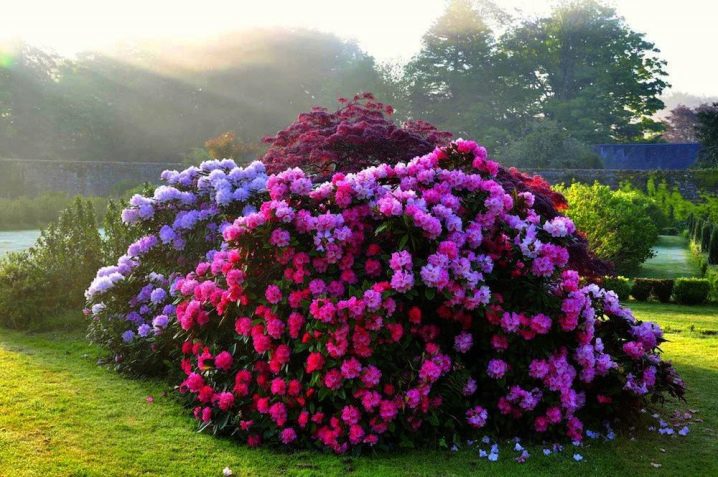
Reproduction methods
Rhododendron reproduces in several ways, including cuttings, layering, seeds and grafting. However, the fastest way is to propagate by layering.
Reproduction by seeds is also easy, but takes a lot of time. Most often, this method is used in cases where it is required to breed a new variety or improve some of the characteristics of an existing one. First of all, you need to prepare a clay pot filled with wet peat and sand. After that, you need to put the seeds in the ground and sprinkle them with a layer of thoroughly washed sand. Now the soil with the sown seeds is covered with glass and removed to a sunlit place. Daily maintenance is important and includes frequent watering and access to fresh air for at least some time during the day. It is imperative to get rid of condensation from the glass. As a rule, the first shoots begin to appear after a month. After the appearance of a pair of clearly formed leaves, the sprouts can be transplanted into a larger container.Such young sprouts for the first 12 months should be grown only in a greenhouse, and only after that they can be transplanted into open soil. It is worth noting that with this method of reproduction, rhododendron grows slowly, and can begin to bloom only after 6 years.
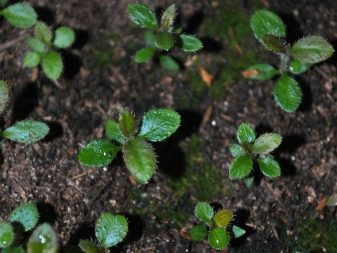
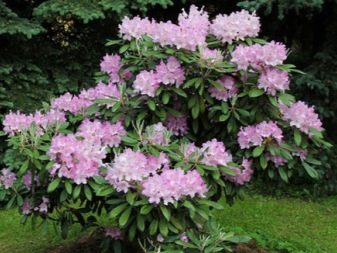
Another breeding method is cuttings. For this method, only semi-lignified branches can be used. Cuttings can range in size from 0.5 centimeters to 0.8 centimeters. The lower leaves of the cuttings are completely cut off. The cuttings themselves are immersed in the solution for half a day. You need to lower the cuttings into a solution consisting of water and a substance that stimulates root growth (for example, "Heterogauksin"). Later, the cuttings must be transferred to a soil consisting of sand and peat. Now the vessel with the cuttings is covered with a glass dome. In such a "state" the plant should be from three months to six months, for some varieties - this period is one and a half months. After this period, the cuttings are placed in special boxes with a substrate (needles and peat). In winter, these boxes are kept in a bright but rather cold room, where the temperature should be around 10 degrees. In the spring, cuttings are transplanted into open ground.
After two years, you need to transplant the plant again, but this time it is final.
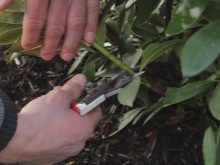
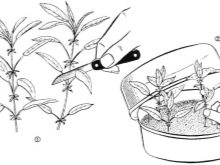
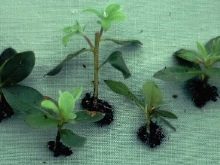
Another method of breeding rhododendron is elbows. As already mentioned, this method is easy, but time-consuming. Reproduction by layering is carried out in early spring. For this, a young shoot is selected, located near the roots. Later, it is crushed and placed in a small trench prepared in advance. Do not make the trench too deep, 15 centimeters is enough. Approximately in the middle of its length, the shoot is fixed in the trench using a pin. This small trench is now filled with a mixture of earth and peat. Next to the remaining free edge of the shoot, you need to install a support and fix the branch against it. It is not necessary to water the cuttings separately, it is best to do this as usual in those moments when the "main" plant is also watered. Layers can be separated only after a year.
Ideally - in early spring, but in some cases it is possible in the fall.
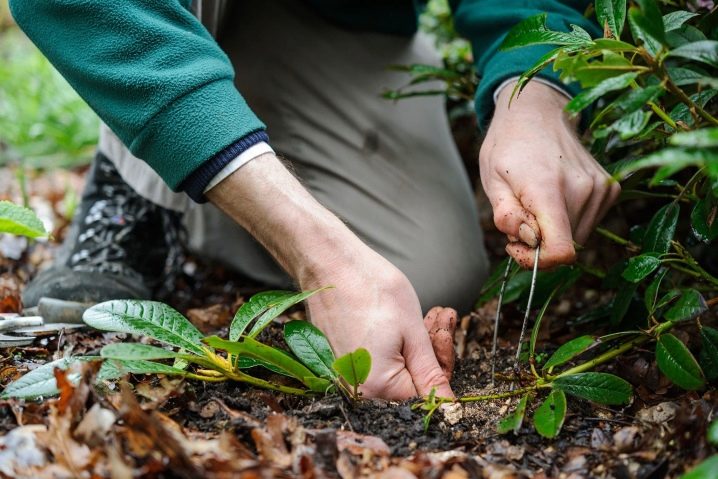
Diseases and pests
The list of diseases commonly seen in rhododendron includes spotting, cancer, rust, and chlorosis. The cause of all these diseases is quite commonplace - lack of oxygen to the roots.

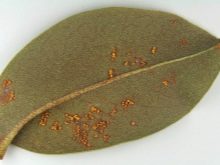
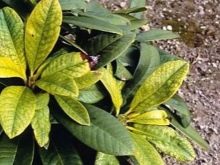
It is recommended to spray the plant with Bordeaux mixture if you find traces of rust or powderiness on the leaves. In this case, any other solutions containing copper can also become a medicine. A solution of copper sulfate can help in this case. Bordeaux mixture can be used to treat the plant just as a preventive measure immediately after winter and before its onset.
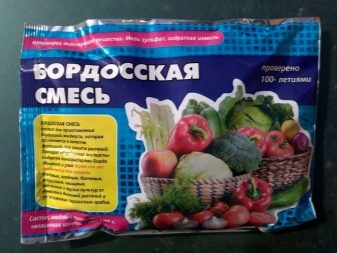
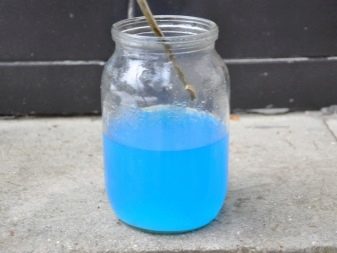
If you find traces of a disease such as chlorosis, in which the leaves begin to turn yellow at a rapid rate, then adding iron chelate to the watering solution may be a treatment.
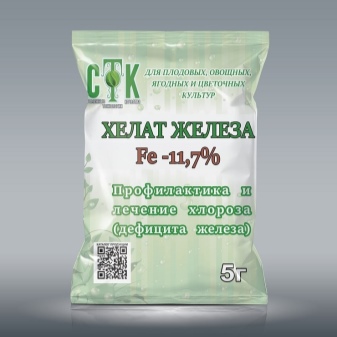
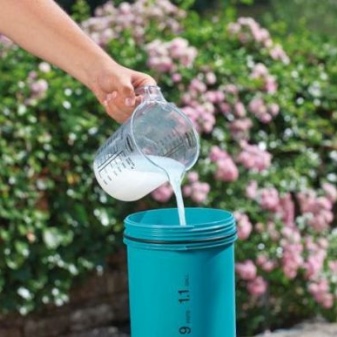
If a plant has cancer, it is necessary to carefully examine it and try to cut off unhealthy branches as much as possible.
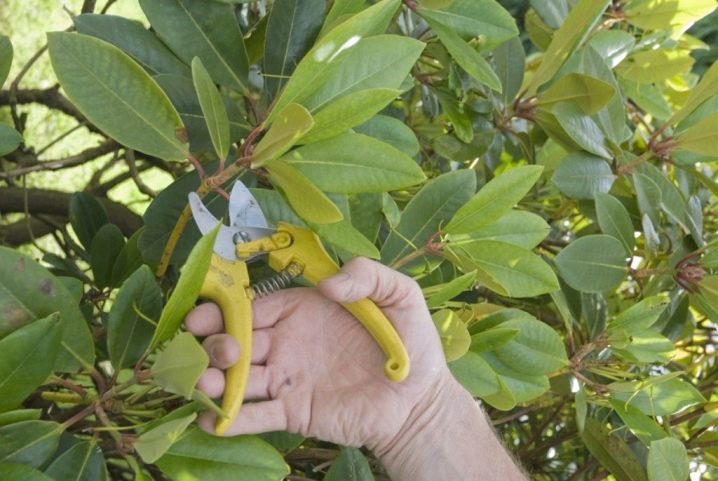
Rhododendron is also susceptible to the action of pests such as spider mites, flies, bugs, mealybugs.
Slugs with snails like to live next to the plant. Unfortunately, most pests can be eliminated only by hand, collecting them from plants. These, for example, are snails that eat the young leaves of a plant. In addition to this method, various fungicidal preparations can be used as a prophylaxis.... Solutions are prepared with their content, and later the plant is sprayed with them.
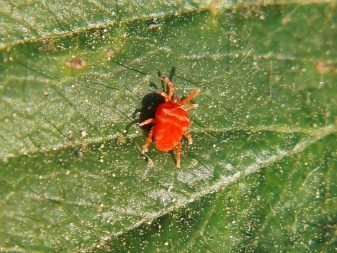

They fight with bugs, ticks and weevils with the help of the drug "Diazin". You need to know that if weevils are affected, the land around the plant must also be processed. In the fight against pests, the drug "Karbofos" can also help.
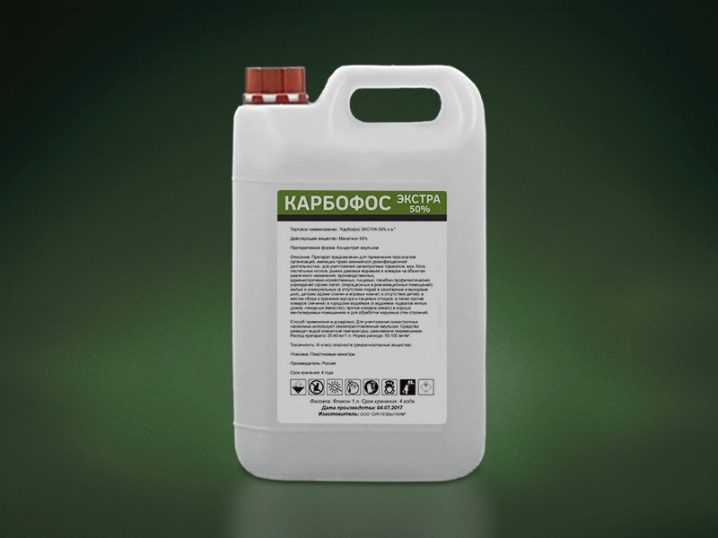
What is the attraction of culture?
First of all, of course, this plant has very beautiful flowers that attract not only gardeners, but also florists. As a rule, rhododendron is planted with several bushes in a row along paths, alleys or along the perimeter of private buildings. It also forms a beautiful version of landscape design together with ponds or a pool, since the leaves tolerate high humidity well. Rhododendron is often neighbors of pines in groves of the same name. In this regard, landscapes and gardens in the Japanese or Chinese style stood out. Almost all of them have this plant.
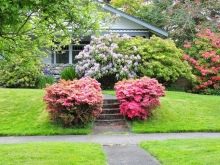
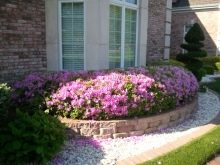

In addition, it is worth noting the high content of nutrients in the leaves of the plant.
In particular, in some species, they contain a large amount of ascorbic acid. Because of this, they are used in alternative medicine. Decoctions and medicines from rhododendron leaves can have analgesic, antibacterial and antipyretic effects. They are able to help the body reduce the volume of edema and have a beneficial effect on the work of the heart, normalize blood pressure.
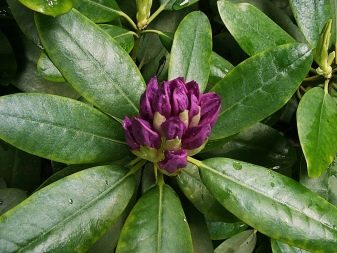
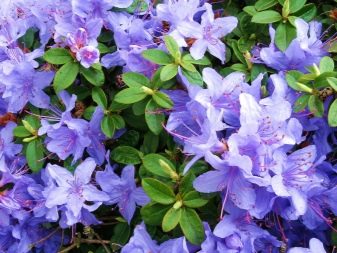
Of course, there are also contraindications for use. The action of the plant can negatively affect the body of pregnant and lactating women, as well as people with kidney problems and some skin diseases. It should be borne in mind, unfortunately, that most of the known species of rhododendron contain poisonous substances. Therefore, in no case should you self-medicate.
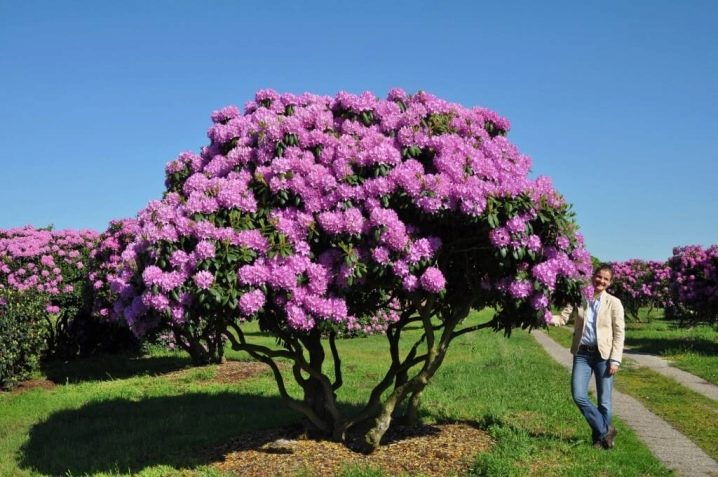
In conclusion, it is worth noting that despite the fact that rhododendron has a rather attractive appearance, it requires a number of conditions for cultivation - this is a certain acidity of the soil, regular processing, high humidity, but not the soil itself. In addition, before planting, you definitely need to know whether this variety is frost-resistant. Subject to all the recommendations, this lush-flowering shrub will delight you with its beauty for more than one decade.
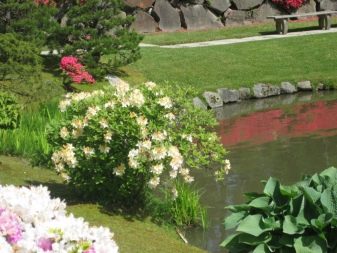
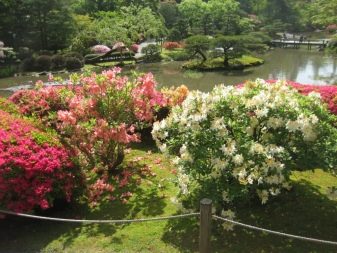
You can watch the video below for planting and caring for rhododendron.



































































































The comment was sent successfully.